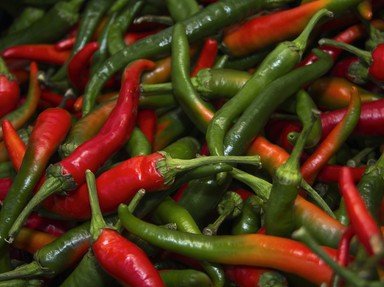
Scoville Scale Peppers Trivia Quiz
This Quiz Packs FIRE!
The Scoville scale measures the heat or spiciness of chili peppers and other spicy foods. It's named after its creator, American pharmacist Wilbur Scoville. Not all peppers pack the same heat. Rank these popular peppers by their spiciness. Bring the heat
An ordering quiz
by LeoDaVinci.
Estimated time: 3 mins.